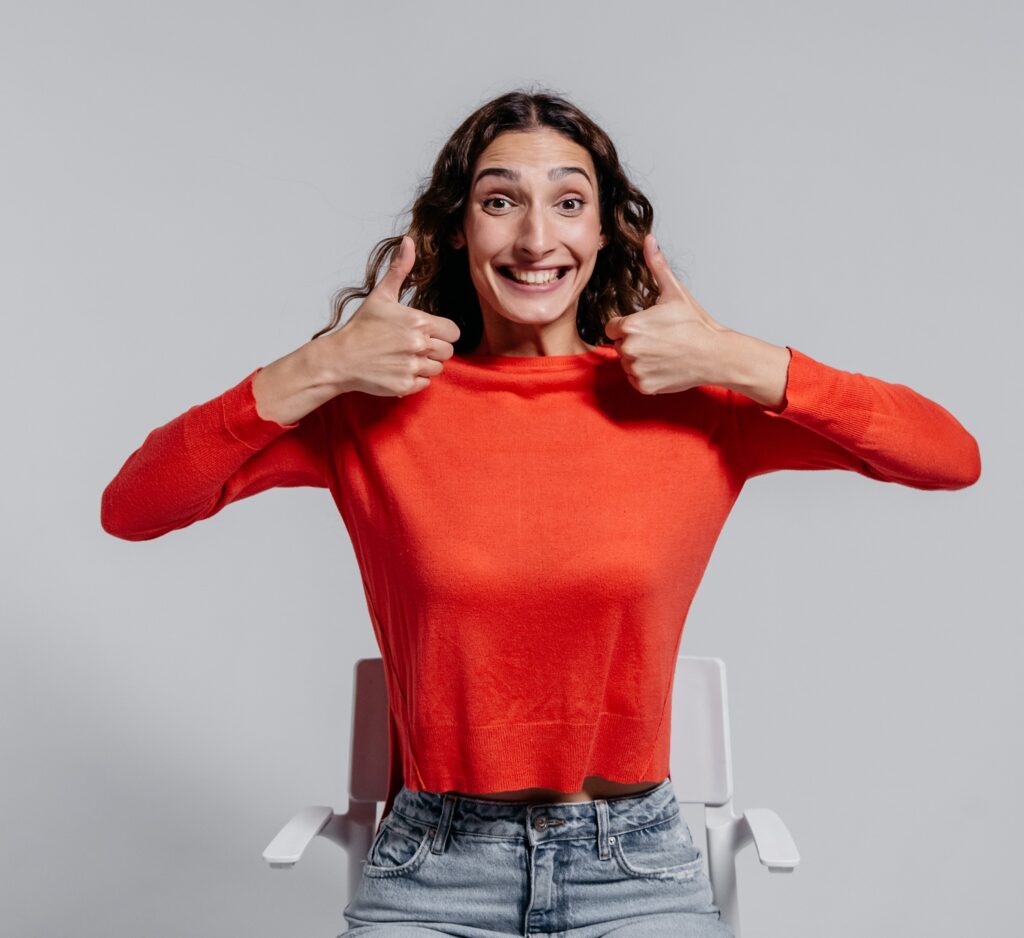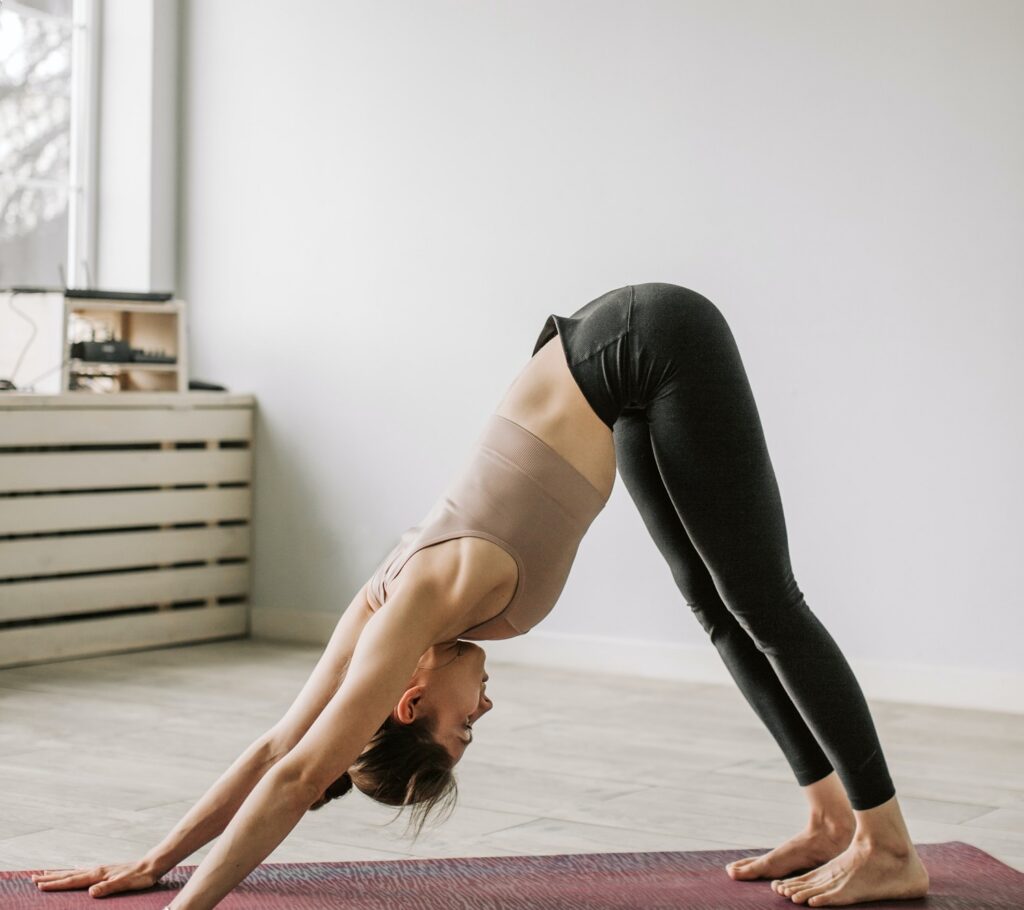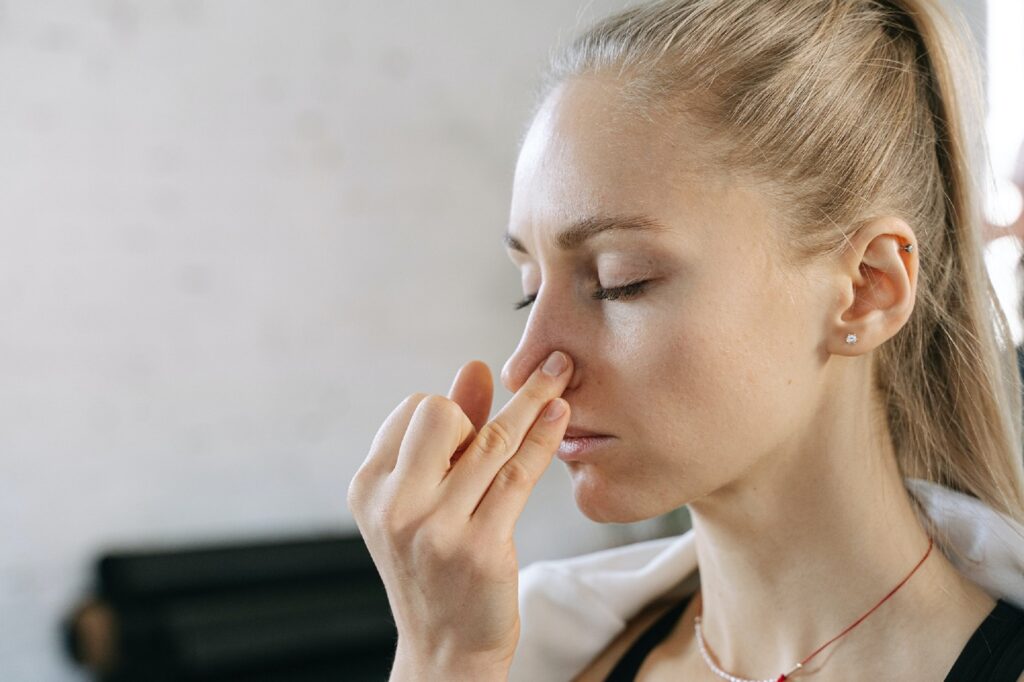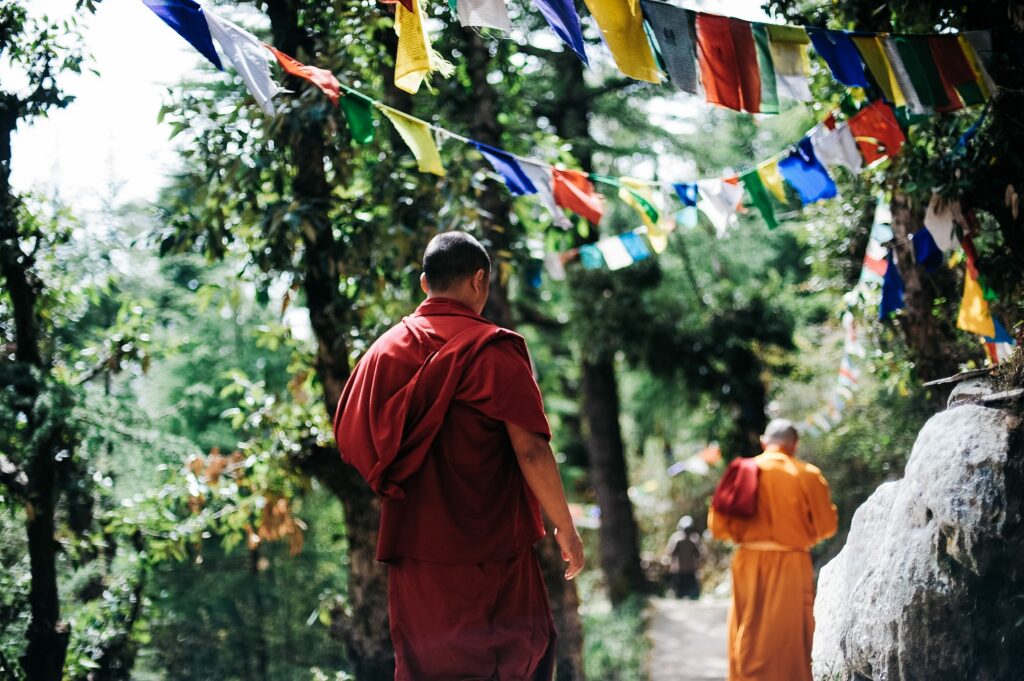

Yogic practices are effective to control your emotions. It is a lifestyle and a strong understanding of your mind and body. You can still feel emotions, however through practicing yoga it can give you better control of your emotions by being aware of your imbalances and/or emotions and controlling them through asanas, pranayama and meditation to take control back.
Yoga and Emotional Dimension of Personality:
There are two kinds of emotions: positive and negative.
For example love, kindness are positive emotions, while anger and fear are personality development thoughts.
Similarly, our feelings and attitudes may be positive and negative.
For your self growth, emotional development, positive feelings, attitudes and emotions should be developed and negative ones should be controlled. The negative attitudes and emotions work as a mental blockages for the development of personality and conscious.
Yoga plays a critical role in development of positive emotions. It’s emotion therapy.
It brings emotional stability and helps to control negative ones.
Yogic practices such as yama, niyama, asana, pranayama, pratyahara and meditation help in emotional self-regulation.
For example, the principle of non-violence will protect us from negative emotions and develop positive feelings of love and kindness for ourself and others. Similarly, other principles like yama and niyama will help to develop positive emotions and attitudes in our personal and social life.
How Yamas and Niyamas teach you to control your emotions?
Yama (restraints) and Niyama (observance) are principles which need to be adopted always in our day-to-day life.
These can be considered as the universal codes of conduct that help us in following high standards in our personal and social life.
Principles of yama are concerned with one’s social life.
The principles of niyama are concerned with one’s personal life.
Yama and niyama are part of Ashtanga yoga and help for self growth.
The five principles of yama are:
- Ahimsa (non-violence),
- Satya (truthfulness);
- Asteya (non-stealing);
- Brahmcharya (abstinence)
- Aparigraha (non-possessiveness, non-grasping or non-greediness).


The five principles of niyama are:
- Shaucha (cleanliness);
- Santosha (satisfaction);
- Tapas (austerity);
- Swadhyaya (study of good literature and knowing about the ‘self’)
- Ishwarpranidhana (dedication to the God/Supreme power/ what you believe).
Control and acceptance: the keys
It is important to have control of your body, you have to be conscious of all your senses, your mind, and your body inside and out.
You need to have an understanding of emotions and when and how they affect you. Feel emotions by not holding them back, however, you should not let the emotions take control of you either. You need to manage them, and yoga practice can help you do this.
Yoga is a spiritual science of self-realization, which means finding oneself through a spiritually journey.
People say they know themselves, but do they really?
Or do they only know their qualities, their idea of who they are?
I have spent a lot of my life just being happy, outgoing and suppressing sadness and anger. I surely did not have control of those emotions, but more of blocking/holding back.
Suppressing my emotions has caused me to be sick on the inside, and these emotions are retaliating and in force. The path of yoga and practicing has helped me to master my emotions and my well-being. It can assist you like an emotions therapy as well.
You can have a deeper understanding of your emotions and taking control back. Certain asanas can also help lift your spirit or the opposite by calming you down but you need to be guided properly if you have no body conscious.
Pranayama also assists with increasing or decreasing your mood through breath by acting on hormones and other physiological systems. You have a better balance and master yourself, mind and body.
Then, through meditation practice, proper and healthy diet, water, and general activities in your daily schedule you have understand the main tools to control your emotions.
Live with your emotions and avoid that your emotions make you live.
Everything is related between your guts and your brain. Meaning that if you have bas food intake then your brain functioning will reflect the quality of your food.
Many people including myself, have blamed someone for my own feelings of anger, sadness or even happiness, but it’s your reaction, not their action that causes these emotions. The emotions can quickly change from one to another and even in a short turn around. With not having control of these emotions, you can hurt yourself, something or even someone else.
Feeling these emotions are natural but you must live with your emotions and avoid that your emotions make you live.
Knowing them, feeling them, accepting them and move onward, through asanas, breath, meditation diet and lifestyle. Once you have understood that and practice that, you will have control of your emotions.
But not only you will master your actions, your reactions and therefore feel more balance within.
If your emotions are running wild and you need balance in your life:
- Check your diet
- Look at your lifestyle and change what you need to change to be balanced
- Look at your emotions
- See how you feel inside
- Accept them
- Move on
Balancing poses and pranayama: what you need to practice.
These asanas and pranayama below will help bring calmness, balance and cleanse the mind and body.
You have to practice putting your consciousness and commitment onto the breath for each asana in a way to feel, experiences and receive the benefits.
Sorry, there is no solutions in this earth than to commit and work little on yourself if you want to get results. You don’t want to put efforts to master your life, then do not complain and undergo.


What poses to practice?
Vrksasana (Tree Pose):
– balancing for a beginner and advanced.
– develops nervous balance and strengthens the legs, ankles, and foot muscles.
To begin, stand on your matt, even out the weight between both of your feet.
You then shift your weight from your left foot primarily on toyour right leg/foot.
Lift your left knee out in front and grab your shin with your left hand.
Open up your hips with moving your left knee out to the left side and having a straight alignment from the knee to your hips.
Keeping your hips open place your left foot on your inner thigh, calf or ankle, just not your knee. From here you can open your arms down by your body with palms facing forward and looking ahead. You can also put your palms together in prayer position or up to make branches with your arms and look to your thumbs or the ceiling.
Relaxed your shoulders, keep the back straight, balance on the 3 points of your foot and keeping a straight line from top to bottom and having an awareness of your pelvis with anterior or posterior tilts. Hold this position up to 2 min each side. When you are ready slowly lower your leg and shake the legs out and swap sides.
If your mood is low and you feel down, and you need a push for energy, backbends are what is needed. They are good for opening up and embracing life and life’s challenges.
Then which backbends?
I have chosen Ushttasana (camel pose).
- Physical benefits with this pose are the extension of the vertebrae,
- stimulation of the spinal nerves which relieving backache, rounded back and drooping shoulders.
- Having the neck stretched tones the throat organs and regulates the thyroid.
- benefits the digestive and reproductive system, through the stretch in the stomach and intestines.
You would begin by sitting in vajrasana pose and then stand on your knees with arms by your side. Lean slowly backwards right-hand reach for the right heel and left hand reaching for the left heel.
Pushing the hips forward, keeping the thighs vertical and bend the head and spine backward as far as comfortable. Relax into the pose and the support is even through both arms and legs. Hold for up to 3min for a static pose and when you are ready to come back slowly release one hand at a time and transition into the counterpose balasana.
Forward bends are a good counterpose for backbends but also good for calming the emotions down. If you need to calm the mind, release anger or release ego these asanas will help.
Counterposes
Balasana (Childs pose)
- stretches and strengthens the back muscles and separates the individual vertebrae from each other, releasing the pressure of the discs, this pose also tones the pelvic muscles and sciatic nerve.
Sit in the vajrasana pose and widen the gap between your knees close to the width of your matt.
Fold forward putting your forehead on the mat and making a curve in the spine.
Stretch your arms out forward with your palms facing down and your stomach rest between your legs.
Push your tail bone down towards your feet and relax, holding this pose around 3min or to calm anger up to but no more than 10 min.
After back and forward bending you should do a spinal twisting asana.
Spinal twist
Meru Vakrasana (spinal twist)
- good for managing entangled knots and twists in your life.
- give us the confidence and energy to learn how to deal with these problems.
- good for the spine, and toning the nerves.
- Alleviates certain types of backaches or neck pain.
Sitting with your legs out straight and back straight, bend your right knee and place your right foot on the outside of the left knee.
Breath in and raise your arms to the sky and on the exhale twist your body to the right.
Placing your left elbow on your right knee with your hand pointing up palm outwards and right hand flat on the ground behind you. On every inhale lengthen the body and exhale twist a little deeper. Holding each side up to 3 min, and when ready re-centre and change legs and twist to the other side.
After moving through some asana’s, pranayama and meditation should be added to the practice, or even on their own if required. They are useful for other ways to gain control of your emotions.
Which pranayamas to practice?
Many pranayamas are good for looking within and connecting with yourself deeply.
You can start by :
Nadi Shodhana should be practiced in each practice of pranayama to balance and purifying to form the basis for a successful practice of pranayama.


Bhramari Pranayama (humming bee breath) is good for relieving stress and cerebral tension and helps alleviating anger, anxiety, insomnia, which increases the healing capacity of the body.
Bhramari Pranayama includes a meditative state by harmonizing the mind and directing the awareness inwards. The vibration of the humming sound creates a soothing effect on the mind and nervous system.
Sit in a comfortable seated pose hands resting on your knees. Back straight and body relaxed.
Raise the arms out to the side, bend the elbows, and bringing the index fingers to plug each ear.
Bringing awareness to the center of the head take a deep breath in through the nose and exhale slowly and controlled while making a deep steady humming sound like that of a bee.
The humming sound should be smooth and continue for the duration of the exhale.
The softness of this sound will vibrate at the front of the skull.
At the end of the round, the hands can stay or be lowered and raised again for the next round. This practice can be between 5-10 rounds for beginners and increase up to 10-15 minutes, if increased tension and anxiety can practice for up to 30 min.
If sitting down is not comfortable for you then meditation with movement is something you can work with.
What about meditation for your emotions ?


One of the meditations of movement is walking, yes, just genal walking.
You can walk anywhere, your house, studio, garden, or the beach.
Anywhere you can walk without tripping can be used. This type of meditation is where you look on the ground just in front of yourself, so you can see where you are going, but having your awareness on your mind and body.
Keeping your body upright, aligned and dignified whilst being comfortable and natural, walk slowly and deliberate with each step.
Take each step by pressing the heel down first and flattering the foot and then lifting the other foot and step forward and place the heel on the ground following by flattening the foot and then taking the next step and repeat.
Just breath naturally (from the diaphragm) and focusing on the rhythmic flow of the breath during each step.
Walk around for at least 5min up to 15min focusing on your breath and your steps. This refocuses your thoughts away from any emotions that are causing you to feel sad, angry or even when you want to calm your pitta.
This meditation gives you the opportunity to look deep within and remember the Earth that sustains us and develop gratitude. Be mindful as possible by being aware of your body and the physical sensations in each step as you move.
Emotional balances from imbalance of doshas:
Knowing your ayurvedic constitution will help you to know what doshas imbalances you have.
You can use asanas to get your balance back for e.g. if you are having an imbalance with your pitta then twisting poses will help towards increasing pitta and forward folds to cool the pitta. Keep checking your dosha till you have a balance and this should help you have more control of your emotions also.
Yoga is a lifestyle and a strong understanding of your mind and body. You still feel emotions, however through yoga practice you have better control of your emotions, aware of your imbalances and/or emotions and controlling them through asanas, pranayama and meditation to take control back.
Wake up with love for yourself, your neighbor, and love for nature, whilst being aware of your emotions and practice what is needed to have control of your mind and body again.
Remember to just breathe, breath in deeply, and exhale completely.
Breath is the main part in charge of our homeostasis. If you are breathing badly, it will automatically impact negatively the state of your mind and system regulation in your body.
Conclusion
Emotions are temporary
Emotions come and go.
Simply become the witness.
Becoming the witness does not mean pushing away your thoughts and emotions; it means allowing them fully, giving them our full attention and awareness without believing that this is who we are.
Emotion takes place within us, yes, and you can even say that it is part of us, but it is not who we really are, and seeing that frees us to be able to fully experience an emotion.
When we are able to fully experience an emotion our world changes because the nature of life is that sooner or later everything changes.
We are not our thoughts.
What we resist persists
When you feel an emotion, don’t run away from it, don’t wallow in it.
Just give it space, feel the raw sensation in the body without stories, without involvement, just presence! This is the highest form of yoga.
If you can really do this, before you know it, the emotion will have changed or dissolved and you can feel the peace that comes from being the pure witness to all experiences.
I hope this gives you an idea of how to handle emotional pain in your yoga practice.


References
A study on effect of yoga on emotional regulation, self-esteem, and feelings of adolescents
Effect of integrated yogic practices on positive and negative emotions in healthy adults
Exploring the therapeutic effects of yoga and its ability to increase quality of life
Reasons, Years and Frequency of Yoga Practice: Effect on Emotion Response Reactivity
A study on effect of yoga on emotional regulation, self-esteem, and feelings of adolescents
